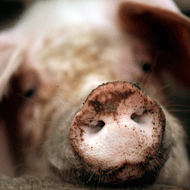Pig sector praised for reducing antibiotic use

Dame Sally emphasised the Government’s One Health approach to antimicrobial resistance.
Chief medical officer Dame Sally Davies has praised the UK pig industry for its progress in reducing antibiotic usage but stressed that the work was only 'half done’.
Speaking at an industry roundtable event in London, Dame Sally emphasised the Government’s One Health approach to antimicrobial resistance and stressed the global nature of the problem.
Joined by chief veterinary officer Christine Middlemiss, she explained that One Health was about ensuring 'we all work together’ to ensure antibiotics are used appropriately in pets, humans and livestock.
“I am proud of how well you are doing with antibiotics. I am here because we are talking One Health. Christine and I are joined at the hip about how we work on this and what we do together,” she said.
“Let me be quite clear – the problem is biggest in human use and misuse of antibiotics.
“I recognise that and I am not into blaming our animal sector. But over 70 per cent of antibiotics used in the world are used by the farming community and the vast majority – over 70 per cent of that – is used for growth promotion, rather than treating sick animals.”
The event, held at the Farmers Club on Monday, was also attended by the NPA senior policy advisor Georgina Crayford. It followed the recent publication of figures showing that antibiotic usage in the pig sector has more than halved over the past two years.
Welcoming these figures, Dame Sally praised the partnership approach, led by veterinary, producer and government representatives, that has driven the reductions.
“You have halved antibiotic use in two years – we are aiming by 2020 to hit 99mg/PCU and we are well on the way,” she said. “You are also reducing high priority critically important antibiotics, which is very important. And you have done this voluntarily.”



 The RCVS has announced a new version of its 1CPD mobile app, with enhanced features for veterinary surgeons and veterinary nurses to record their continuing professional development.
The RCVS has announced a new version of its 1CPD mobile app, with enhanced features for veterinary surgeons and veterinary nurses to record their continuing professional development.